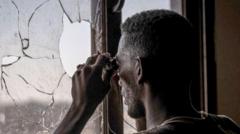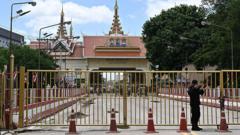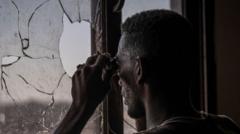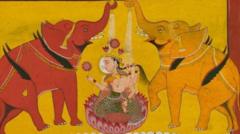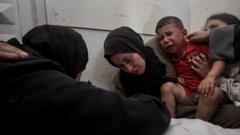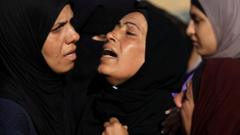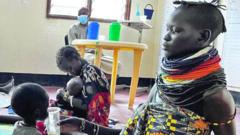In a nation where monks play a crucial role in society, this disaster has left an indelible mark on the spiritual fabric of the nation.
A Tragic Earthquake Devastates Monastic Life in Myanmar

A Tragic Earthquake Devastates Monastic Life in Myanmar
The recent earthquake in Myanmar not only took thousands of lives but also severely impacted the country’s Buddhist monastic community.
The Old Masoeyein monastery in Mandalay lay in ruins after a powerful earthquake rocked Myanmar on March 28, claiming thousands of lives, including many monks. Among the deceased was Ashin Pyinnyar Tharmi, a 27-year-old monk whose funeral was attended by mourning colleagues who gathered to pay respect amid the devastation.
As traditional cremation ceremonies were shortened, Buddhist chants filled the air with somber reflections on mortality, emphasizing the transient nature of life. This tragic loss is even more poignant for a nation already gripped by a humanitarian crisis and ongoing civil unrest.
The earthquake has struck at the very heart of Myanmar, where nearly 90 percent of the population practices Buddhism, integrating deeply into public life and national identity. The destruction of temples and monasteries has not only resulted in a loss of sacred spaces but also of the spiritual leaders who guide communities, leaving an uncertain path ahead for those who remain.
In recent years, however, political tensions have surfaced within the Buddhist community, marked by forms of nationalism and extremist movements. As the nation grapples with recovery from this disaster, the challenge of rebuilding will be complicated by these societal divisions.
As traditional cremation ceremonies were shortened, Buddhist chants filled the air with somber reflections on mortality, emphasizing the transient nature of life. This tragic loss is even more poignant for a nation already gripped by a humanitarian crisis and ongoing civil unrest.
The earthquake has struck at the very heart of Myanmar, where nearly 90 percent of the population practices Buddhism, integrating deeply into public life and national identity. The destruction of temples and monasteries has not only resulted in a loss of sacred spaces but also of the spiritual leaders who guide communities, leaving an uncertain path ahead for those who remain.
In recent years, however, political tensions have surfaced within the Buddhist community, marked by forms of nationalism and extremist movements. As the nation grapples with recovery from this disaster, the challenge of rebuilding will be complicated by these societal divisions.

